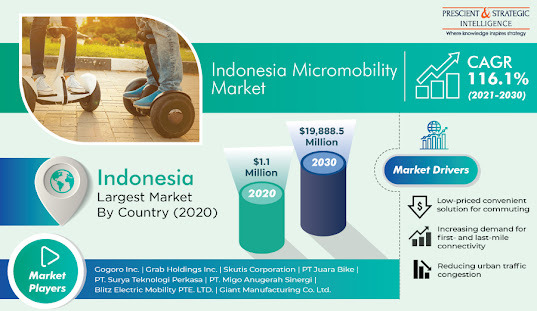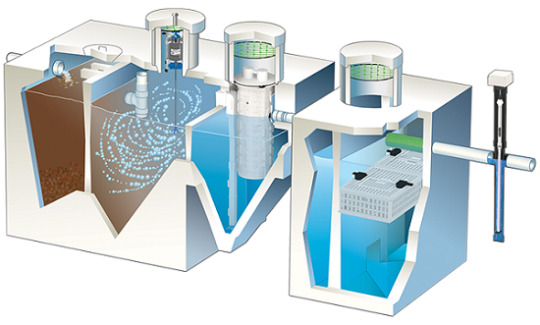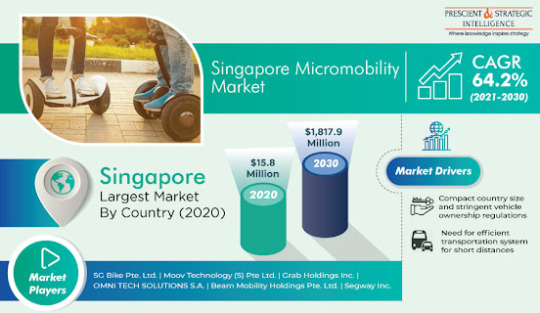#Regulatory frameworks
Text
India High Capacity Inverter Market Will Touch USD 1,893.7 Million in 2030
The India high-capacity inverter market was USD 953.5 million in 2023, and it will increase to USD 1,893.7 million, advancing at a 10.4% compound annual growth rate, by 2030.
The requirement for high-end hybrid inverters is rising because numerous consumers are searching for UPS systems for commercial purposes, which saves a lot of expenses as compared to generators.
Because of the irregular…
View On WordPress
#India high-capacity inverter market#market trends#Regulatory frameworks#reliable power solutions#sustainable energy adoption
0 notes
Text
Regulatory Intelligence Services
Top-tier regulatory intelligence solutions for pharma companies. Continue compliant effortlessly. Explore Vistaar for a competitive edge!
https://www.vistaar.ai/services-regulatory-intelligence/
#regulatoryscrutiny#regulatorychallenges#regulatorycompliance#regulatory frameworks#regulatoryaffairs#medical devices
0 notes
Text
Exploring the U.A.E. Chiller Market: Trends, Applications, and Growth Opportunities
The value of the U.A.E. chiller market stood at USD 129.8 million in 2023, and this number is projected to reach USD 191.5 million by 2030, advancing at a CAGR of 6.0 % during the projection period. This growth can be credited to the increasing hospitality industry, overall development in the industry of construction, and the rising need for chillers from the transport sector in the nation.

During the projection period, based on chiller type, the centrifugal category is projected to showcase immense opportunities in the industry. The gaining of high-power productivity magnetic centrifugal chillers with a lower energy footprint instead of conventional centrifugal chillers is the utmost extraordinary trend being witnessed in the industry.
On the basis of end-users, the commercial category generates the largest income share in the industry. This is mainly due to the high acceptance of chillers in numerous commercial applications, like commercial buildings, hotels, hospitality, offices, hypermarkets/ supermarkets, government buildings, and healthcare facilities, and huge expenditure for the growth of hotels and hike in figures of hotel construction projects.
Also, chillers are gaining resistance in the sector of hotels for the aim of chilling. In the U.A.E., Dubai reports a huge number of hotel construction projects. Considerable hospitality companies, like Accor S.A., Hilton Hotels & Resorts, and Marriott International are emerging
for the upcoming invasion of travelers.
On the basis of region, Dubai is considered the principal industry in the nation for chillers. This is due to the high development in building activities because of the World Expo event that occurred in 2020.
Furthermore, the Dubai government has undertaken to decrease the dependency on oil and gas in the long term while at the same time taking a more holistic method for the growth of additional sectors such as hospitality and tourism.
In response to the upcoming key events in Dubai, where it is vital that there be an imminent tourist invasion, the government envisages a range of over 150 important hotel projects. Therefore, demand for cooling equipment in this area is propelled by these reasons.
#U.A.E. chiller market#trends#applications#growth opportunities#commercial buildings#industrial facilities#residential complexes#regulatory frameworks#technological advancements#consumer preferences#key players#competitive landscape
0 notes
Text
Indonesia Micromobility Market is Led by the E-Moped Category
The Indonesia micromobility market will touch USD 19,888.5 million, powering at a 116.1% compound annual growth rate, by 2030.
This growth is because of the growing requirement for lessening urban traffic congestion, the rising need for first- and last-mile connectivity, and the convenience and low cost of such services for traveling.

Moreover, the government is likely to seize the bike trend as a chance to make funding for sustainable mobility and make biking the favored approach of transport in the new-normal period. Several micromobility service providers that had ceased or decreased processes during the lockdown are now concentrating on enhancing their fleet sizes to fill the mounting demand.
Furthermore, micromobility offers different benefits than other modes of transport, for example, greater connectivity to public transportation hubs, reduced carbon footprint, and less reliance on personal vehicles. Also, these services assist in decreasing the issue of traffic jams on urban roads, as these automobiles are small and need less area for parking or on roads.
Additionally, the arrival of swappable batteries has boosted the fleet uptime significantly, while also decreasing the operating expenses, which has eventually taken the micromobility sector toward profitability.
In the past few years, the first-and last-mile category, based on model, was the larger contributor to the industry. Moreover, this category will propel at a faster compound annual growth rate during this decade. This is mainly because of the increasing acceptance of these services to subway entrances, reach offices, bus stops, schools, and public institutions.
With the increasing requirement to decrease urban traffic congestion and the surging need for first-and last-mile connectivity, the Indonesia micromobility industry will continue to progress in the coming years.
#Indonesia Micromobility Market#Urban Mobility#Innovation#Electric Scooters#Bike-Sharing Programs#Sustainability#Accessibility#Market Dynamics#Key Players#Regulatory Frameworks
0 notes
Text
Future of Neurotechnology in Post - Neuralink Era!
Future of Neurotechnology in Post-Neuralink Era!
@neosciencehub
#neosciencehub #science #neurotechnology #neuralink #braincomputer #neurological #brainchip #NeuralinkDevelopment #DataSecurity #ArtificialIntelligence #AITech #HumanAI #NSH #Innovations
The successful human implantation of Neuralink’s brain-computer interface marks a watershed moment in the field of Neurotechnology. This achievement not only demonstrates the immense potential of merging human cognition with artificial intelligence but also sets the stage for a future filled with extraordinary possibilities and challenges. NSH’s special report is to explore what lies ahead in the…

View On WordPress
#artificial intelligence#Brain-Computer Interface Advancements#Cognitive Enhancement#Cognitive Privacy#Ethical Implications#featured#Future of Neurotechnology#Human Rights in Tech#Human-AI Symbiosis#Mental Health Tech#Neuralink#Neuralink Developments#Neurological Data Security#Neurological Disorder Treatments#Neurotech Challenges#Regulatory Frameworks#sciencenews#Technology Accessibility
0 notes
Text
Water and Wastewater Treatment Equipment Market, Analyzing Market Forces, Technological Advancements, and Environmental Impacts
The global water and wastewater treatment equipment market size is anticipated to reach USD 90.0 billion by 2030, registering a CAGR of 4.6% over the forecast period, according to a new report by Grand View Research, Inc. The market is driven by increasing demand for clean and safe water in both developed and emerging economies. This is due to growing concerns over water pollution and scarcity, and the need for effective wastewater management.

Water And Wastewater Treatment Equipment Market Report Highlights
Asia Pacific accounted for the largest revenue share of the global market in 2023, accounting for 35.1%, and is expected to maintain its dominance throughout the forecast period. This can be attributed to the presence of a strong consumer base that has led to significant demand for water and wastewater treatment equipment
By application, the municipal segment dominated the market with a revenue share of 66.0% in 2023. The increasing initiatives undertaken by governments, strict environmental regulations, and increasing awareness regarding water treatment are some of the factors contributing to the growth of the municipal segment over the forecast period
By process, the tertiary treatment segment dominated the market with a revenue share of 44.2% in 2023. Some of the drivers for the increasing demand for tertiary wastewater treatment are environmental protection, water scarcity, and the increasing demand for clean water. As these issues continue to be major concerns across the world, the demand for tertiary wastewater treatment is expected to grow over the forecast period
Major key players frequently engage in mergers & acquisitions and new product launches to maintain their market shares. For instance, in March 2022, Pentair plc, announced the definitive agreement to acquire Manitowoc Ice. The move was taken by the company to enhance its commercial water solutions platform and cater to the demand from the food service industry
For More Details or Sample Copy please visit link @: Water And Wastewater Treatment Equipment Market Report
Furthermore, the demand for decentralized wastewater treatment systems is expected to increase over the projected period, as these systems offer several advantages such as low operating costs, high treatment efficiency, and easy maintenance. Several companies are focusing on developing innovative decentralized wastewater treatment systems that can be easily installed in residential and commercial buildings.
Population growth, urbanization, increasing industrialization, and the need for clean water for various purposes such as drinking, agriculture, and industrial processes all drive demand for water and wastewater treatment equipment. Government regulations aimed at protecting the environment and ensuring public health also have an impact on the demand for water and wastewater treatment equipment.
The market players are constantly undertaking strategic initiatives such as mergers, acquisitions, partnerships, and new product launches to gain a competitive advantage. For instance, Ceco Environmental, a provider of air pollution control solutions, announced the acquisition of Compass Water Solutions, a provider of water and wastewater treatment equipment. The acquisition will enable Ceco Environmental to integrate Compass Water Solutions’ critical engineered solutions with its industrial water capabilities.
WaterAndWastewaterTreatmentEquipmentMarket #WaterAndWastewaterTreatmentEquipment #WaterTreatment #WastewaterManagement #EnvironmentalEngineering #SustainableTechnology #CleanWaterSolutions #IndustrialWaterTreatment #WaterPurification #GreenInfrastructure #InnovationInWaterManagement #WaterQualityControl #WastewaterRecycling #MarketTrends #EnvironmentalCompliance #SmartWaterTechnologies #RegulatoryFrameworks #EcoFriendlySolutions #EmergingTechnologies #ResourceRecovery
#Water and Wastewater Treatment Equipment Market#Water and Wastewater Treatment Equipment#Water Treatment#Waste water Management#Environmental Engineering#Sustainable Technology#Clean Water Solutions#Industrial Water Treatment#Water Purification#Global Market Analysis#Green Infrastructure#Innovation In Water Management#Water Quality Control#Waste-water Recycling#Environmental Compliance#Smart Water Technologies#Regulatory Frameworks#Eco-Friendly Solutions#Emerging Technologies#Resource Recovery
0 notes
Text
Even though GDPR insists enterprises comply with privacy laws, except in the EU, data privacy is a thing of the past. Invasive technology shot to the limelight, which’s now putting certain governments and associations on tenterhooks for implementing more stringent security and regulatory frameworks.
0 notes
Text
Politics and Business: Navigating Instability in Eastern Europe
by Eastern European Institute for Trade

Eastern European nations face a myriad of challenges as they strive to balance political instability with economic development. This volatile landscape poses significant obstacles for businesses, both local and foreign, as they navigate a complex web of regulations, corruption, and political risk (Pop-Eleches & Tucker, 2011; EBRD, 2020). In this article, we delve into the causes of instability, the implications for businesses operating in the region, and potential strategies for managing the risks associated with political turbulence.
Political instability in Eastern Europe can be attributed to a multitude of factors, including weak governance, high levels of corruption, and ongoing tensions between European Union (EU) aspirations and the influence of Russia (Pop-Eleches & Tucker, 2011; Börzel & Lebanidze, 2017). This instability creates an uncertain business environment, marked by policy unpredictability, regulatory inconsistencies, and heightened risks for investors (EBRD, 2020).
The implications of political instability for businesses operating in Eastern Europe are manifold. Investment decisions may be hindered by a lack of transparency and predictability in regulatory frameworks, while companies face increased operating costs due to corruption and bureaucratic inefficiencies (Slinko et al., 2005; EBRD, 2020). Additionally, geopolitical tensions and the potential for conflict create security risks, further complicating business operations (Börzel & Lebanidze, 2017).
To successfully navigate the complexities of the Eastern European business environment, companies must adopt a proactive approach to managing political risk. This entails conducting thorough due diligence, engaging in strategic planning to anticipate potential scenarios, and fostering strong relationships with local stakeholders (Pop-Eleches & Tucker, 2011; KPMG, 2016). Moreover, businesses should consider diversifying their operations and investments to mitigate the impact of regional instability (KPMG, 2016).
International actors, such as the EU and the International Monetary Fund (IMF), also have a critical role to play in promoting stability and economic growth in Eastern Europe. By providing financial assistance and technical expertise, these organizations can support the implementation of reforms aimed at strengthening governance, combating corruption, and fostering a more predictable business environment (Pop-Eleches & Tucker, 2011; EBRD, 2020).
In conclusion, political instability in Eastern Europe poses significant challenges for businesses. To navigate this uncertain landscape, companies must adopt a proactive approach to managing risk, while international actors should support regional efforts to improve governance and promote stability. By working together, businesses and policymakers can foster a more predictable and conducive environment for economic growth and investment in the region.
References:
Börzel, T. A., & Lebanidze, B. (2017). European Neighborhood Policy at the Crossroads: Evaluating the Past to Shape the Future. European Policy Analysis, 3(1), 1–19.
EBRD (2020). Transition Report 2020–21: The State Strikes Back. European Bank for Reconstruction and Development.
KPMG (2016). Navigating an uncertain landscape: The changing world of risk. KPMG International.
Pop-Eleches, G., & Tucker, J. A. (2011). After the Colored Revolutions: Regime Change and Political Instability in Eastern Europe. Journal of Democracy, 22(3), 49–63.
Slinko, I., Yakovlev, E., & Zhuravskaya, E. (2005). Laws for Sale: Evidence from Russia. American Law and Economics Review, 7(1), 284–318.
Read more at Eastern European Institute for Trade.
#EEIT#Eastern European Institute for Trade#Politics and business#Eastern Europe#Instability#Political risk#Geopolitical tensions#Economic development#Weak governance#Corruption#European Union (EU)#Russia#Investment decisions#Regulatory frameworks#Due diligence#Strategic planning#Stakeholder engagement#Diversification#International Monetary Fund (IMF)#Reforms#Business environment#Economic growth
0 notes
Link
0 notes
Text
#hr compliances#list of hr compliances#indian hr compliance#hr compliance calendar 2024#hr compliance checklist#hr compliance training#hr compliance specialist#hr compliance certification#hr compliance analyst#hr compliance and governance#examples of hr compliance#hr compliance by state#hr compliance best practices#hr statutory compliance books#hr regulatory compliance#basic hr compliance#hr compliance courses#hr compliance checklist in india#common hr compliance issues#hr compliance documents#hr compliance duties#hr employment regulations#employee relations compliance#hr compliance for small business#hr compliance framework#hr federal regulations#hr compliance services#hr compliance companies#human resources compliance#global hr compliance
0 notes
Text
Charging Ahead Exploring the Solid-State Battery Market Landscape
Several aspects of an EV are the same as a gas-driven one: tires are tires, the seats are seats, and the steering wheel still turns right and left. The major difference, and the one that will make or break mass EV acceptance, is the battery.
That is why some of the most thrilling research in the contemporary automotive landscape centers on battery tech—and “solid-state” batteries are one area…

View On WordPress
#Electric vehicles#energy storage#innovations#market#portable electronics#regulatory frameworks#solid-state batteries#sustainability#technology
0 notes
Text
Regulatory Compliance with Requirements Database & Summary Reports
Simplify pharmaceutical regulatory compliance with databases, summary reports, and tracking tools. Explore now and streamline your processes.
https://www.vistaar.ai/summarize-regulatory-compliance-requirements-database-reports/
#regulatoryscrutiny#regulatorycompliance#regulatorychallenges#regulatory frameworks#regulatoryaffairs#medical devices#healthcare
0 notes
Text
Latest AI Regulatory Developments:
As artificial intelligence (AI) continues to transform industries, governments worldwide are responding with evolving regulatory frameworks. These regulatory advancements are shaping how businesses integrate and leverage AI technologies. Understanding these changes and preparing for them is crucial to remain compliant and competitive.
Recent Developments in AI Regulation:
United Kingdom: The…

View On WordPress
#AI#AI compliance#AI data governance#AI democratic values#AI enforcement#AI ethics#AI for humanity#AI global norms#AI human rights#AI industry standards#AI innovation#AI legislation#AI penalties#AI principles#AI regulation#AI regulatory framework#AI risk classes#AI risk management#AI safety#AI Safety Summit 2023#AI sector-specific guidance#AI transparency requirements#artificial intelligence#artificial intelligence developments#Bletchley Declaration#ChatGPT#China generative AI regulation#Department for Science Innovation and Technology#EU Artificial Intelligence Act#G7 Hiroshima AI Process
1 note
·
View note
Text
Redefining Urban Transit: Exploring the Singapore Micromobility Market
With about 67% share in public and shared transportation, Singapore has a smart and sustainable mobility method. Only about 33% of the country’s transport are private modes for example car and motor bike.
Working toward a vision of a “car-lite” city, the government has recognized more than a few measures that make private cars somewhat costly and less attractive. A strict vehicle quota limits the car count. Road assessing surges the cost of private car use. And the tax system additionally imposes monetary burden on car proprietors. By doing so, Singapore is proactively fighting congestion, pollution, and car accidents.

The Technocratic Management Pushes Non-Motorized Modes
The data-driven, technocratic government has an important role in shaping Singapore’s movement of the future in the long term. With the use of data and scenarios in a non-democratic but hard, transparent and effective way, the Singapore management is further driving maintainable transportation options concentrating on non-motorized modes. The public transportation system based on urban rail connects the city centre and the suburbs. It is continually expanded and enhanced.
Active mobility modes such as walking and cycling are underrepresented but pushed strategically, e.g. by building showers and lockers at mobility hubs such as bike stations. Roads are redesigned to be more pedestrian-oriented and cyclist-friendly. Recently added micro-mobility options such as e-scooters and kick scooters do further contribute to the reduction of individual motorized transport.
Autonomous Driving to Address Lack of Labor and Land
With its elderly populace sometimes called “silver tsunami,” the authorities are not banning cars completely. They are somewhat working toward a future on the basis of electric and autonomous cars. Many pilots for self-driving shuttles or buses are established. Autonomous driving can use roads more competently in a nation that is infamous for its shortage of land. Furthermore, self-driving buses are a solution to the lack of labor for functioning public transport.
MaaS with Public and Shared Transport as Core
Overall, the Singapore government is seeing a vision that is described as a continuous mobilityapproach. Singapore’s micromobility of the future will be a door-to-door, on-demand, multimodal service where shared, private, and public transport are all interconnected. It is the concept of MaaS that offers a mobility solution rather than only transport.
On the core it will be public and shared transport on the basis of smartphone apps that guarantee individual and tension-free first-and-last-mile connectivity. MaaS is an example for transporting the vision of seamless mobility to Singapore. With their Whim app, the Finnish startup plans to combine many transport modes, from bus to taxis, car sharing and bikes in just an app.
An important factor for micromobility in Singapore is the transportation being planned and monitored by a robust administration that collaborates with innovative startups in private-private partnerships.
Though the management offers anonymized traffic data, the startups bring the latest tech. This action is in robust contrast to many governments of the west whose incompetent administrations do still emphasis on widespread private car use and fail to reliably advance public and shared transportation.
Coming to a Conclusion
It is because of the increasing need for efficient transport systems for travelling short distances, the demand for micro mobility solutions in Singapore is on the rise. The total value of the industry will reach USD 1, 817.9 million by the end of this decade.
#Singapore Micromobility Market#Urban Transit#Innovation#Electric Scooters#Bike-Sharing Programs#Accessibility#Sustainability#Market Dynamics#Key Players#Regulatory Frameworks
0 notes
Text
Data Bridge Market Research analyses that the optometry/eye exam equipment market which was USD 3.05 billion in 2022, is expected to reach USD 5.32 billion by 2030, and is likely to undergo a CAGR of 7.20% during the forecast period of 2023 to 2030. “Hospitals” dominates the end-user segment of the optometry/eye exam equipment market owing to increasing number hospitals especially in the developing economies. In addition to the insights on market scenarios such as market value, growth rate, segmentation, geographical coverage, and major players, the market reports curated by the Data Bridge Market Research also include depth expert analysis, patient epidemiology, pipeline analysis, pricing analysis, and regulatory framework.
#is expected to reach USD 5.32 billion by 2030#growth rate#geographical coverage#and major players#pipeline analysis#pricing analysis#and regulatory framework.
0 notes
Text
Businesses spanning diverse industries must prepare for the evolving landscape of rules and regulations. This proactive approach is crucial for effectively addressing their operations and compliance challenges. Being ready for these changes is about more than just checking off tasks. It's an important strategy to ensure businesses can last and do well in a complicated global world.
#compliance#regulatory framework#'data privacy#data protection#cybersecurity#security#infosectrain#learntorise
0 notes